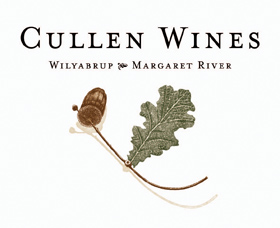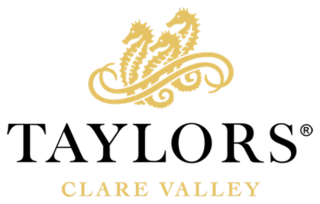
The Canberra District wine region is located around Canberra in the Capital city of Australia. It covers the northern part of the Australian Capital Territory and an area of New South Wales to the east and north of that, including towns of Bungendore, Murrumbateman and Yass, New South Wales.

The Australian wine industry is one of the world's largest exporters of wine, with approximately 800 million out of the 1.2 to 1.3 billion litres produced annually exported to overseas markets. The wine industry is a significant contributor to the Australian economy through production, employment, export, and tourism.

Brown Brothers Milawa Vineyard is a family-owned wine company based in Milawa, Victoria, Australia. Brown Brothers was founded in 1889 by John Francis Brown and continues to be owned and operated by his descendants on the original property. Brown Brothers makes wine from a wide range of grape varieties and into a range of styles.

Penfolds is an Australian wine producer that was founded in Adelaide in 1844 by Christopher Rawson Penfold, an English physician who emigrated to Australia, and his wife Mary Penfold. It is one of Australia's oldest wineries, and is currently part of Treasury Wine Estates.

Namibian wine is produced in small quantities by a few wineries. Although the production of wine is expanding in Namibia, the grapes grown in the country are mostly destined for use as table grapes for export to Europe rather than for wine. One of the challenges of viticulture in Namibia is that the country is quite dry, which means that irrigation is usually necessary. Unlike its southern neighbour, South Africa, it is also situated closer to the equator than the traditional "30 to 50 degrees latitude" rule of thumb of areas suitable for wine production.

The South Australian wine industry is responsible for more than half the production of all Australian wine. South Australia has a vast diversity in geography and climate which allows the state to be able to produce a range of grape varieties–from the cool climate Riesling variety in the Clare Valley wine region to the big, full bodied Shiraz wines of the Barossa Valley.

Victorian wine is wine made in the Australian state of Victoria. With over 600 wineries, Victoria has more wine producers than any other Australian wine-producing state but ranks third in overall wine production due to the lack of a mass bulk wine-producing area like South Australia's Riverland and New South Wales's Riverina. Viticulture has existed in Victoria since the 19th century and experienced a high point in the 1890s when the region produced more than half of all wine produced in Australia. The phylloxera epidemic that soon followed took a hard toll on the Victoria wine industry which did not fully recover till the 1950s.

New South Wales wine is Australian wine produced in New South Wales, Australia. New South Wales is Australia's most populous state and its wine consumption far outpaces the region's wine production. The Hunter Valley, located 130 km (81 mi) north of Sydney, is the most well-known wine region but the majority of the state's production takes place in the Big Rivers zone-Perricoota, Riverina and along the Darling and Murray Rivers. The wines produced from the Big Rivers zone are largely used in box wine and mass-produced wine brands such as Yellow Tail. A large variety of grapes are grown in New South Wales, including Cabernet Sauvignon, Chardonnay, Shiraz and Sémillon.

Elderton Wines is an Australian winery in Nuriootpa, in the Barossa Valley. The company was founded by Neil and Lorraine Ashmead in 1979. The Elderton wines are made from grape varieties including red grapes Shiraz, Cabernet Sauvignon, Merlot as well as white grapes Riesling and Chardonnay.

Howard Park Wines are Margaret River and Great Southern wine specialists and a family-owned winery owned by the Burch family, which is responsible for such brands as Howard Park, MadFish, and Marchand & Burch. With an established winery based in Margaret River, Western Australia and vineyards in the Great Southern, the Burch family are the first Australians to gain ownership in the production of a French Burgundian Grand Cru.

Henschke is a family-owned, 156-year-old Australian winery, located in Keyneton, South Australia in the Eden Valley wine region. It produces the 'Hill of Grace', one of Australia's "cult wines", and was considered Australia's second best wine by James Halliday in 2009.

The Barossa Valley wine region is one of Australia's oldest and most premier wine regions. Located in South Australia, the Barossa Valley is about 56 km northeast of the city of Adelaide. Unlike most of Australia whose wine industry was heavily influenced by the British, the wine industry of the Barossa Valley was founded by German settlers fleeing persecution from the Prussian province of Silesia. The warm continental climate of the region promoted the production of very ripe grapes that was the linchpin of the early Australian fortified wine industry. As the modern Australian wine industry shifted towards red table wines in the mid-20th century, the Barossa Valley fell out of favor due to its reputation for being largely a Syrah from producers whose grapes were destined for blending. During this period the name "Barossa Valley" rarely appeared on wine labels. In the 1980s, the emergence of several boutique families specializing in old vine Shiraz wines began to capture international attention for the distinctive style of Barossa Shiraz, a full bodied red wine with rich chocolate and spice notes. This led to a renaissance in the Barossa Valley which catapulted the region to the forefront of the Australian wine industry.
Cono Sur Vineyards & Winery is a subsidiary of Concha y Toro Winery and is the third largest exporter of bottled wine in Chile. Established in 1993, its name is a reference to its location in the Southern Cone of South America and a play on the word connoisseur. In 2015, it was the official wine of the Tour de France.
Giaconda is an Australian winery in Beechworth, Victoria.
Grosset Wines is an Australian winery based in the Clare Valley wine region of South Australia.
Leeuwin Estate is an Australian winery and restaurant based in the Margaret River wine region of Western Australia.

Cullen Wines is an Australian winery based in Wilyabrup, within the Margaret River wine region of Western Australia.

Olmo grapes are wine and table grape varieties produced by University of California, Davis viticulturist Dr. Harold Olmo. Over the course of his nearly 50-year career, Dr. Olmo bred a wide variety of both grapes by means of both crossing varieties from the same species or creating hybrid grapes from cultivars of different Vitis species.

Taylors Wines is a family-owned winery established in 1969 and located in the Clare Valley of South Australia. Taylors is one of the founding members of the Australia's First Families of Wine. As at 2022 it was ranked the thirteenth largest Australian wine company in terms of total revenue.

Fleurieu zone is a wine zone located south of Adelaide in South Australia. It extends from Kangaroo Island in the west as far north as Flagstaff Hill on the west side of the Mount Lofty Ranges and to as far north as Langhorne Creek on the east side of the Mount Lofty Ranges. It consists of the following five wine regions, each of which has received appellation as an Australian Geographical Indication (AGI): Currency Creek, Kangaroo Island, Langhorne Creek, McLaren Vale and the Southern Fleurieu.
















